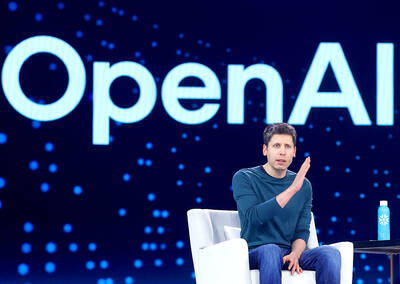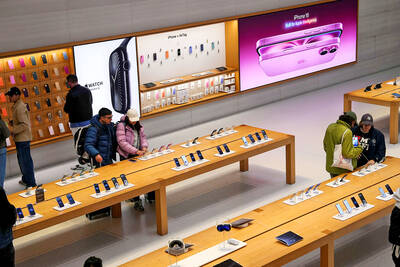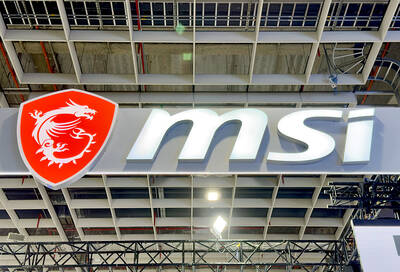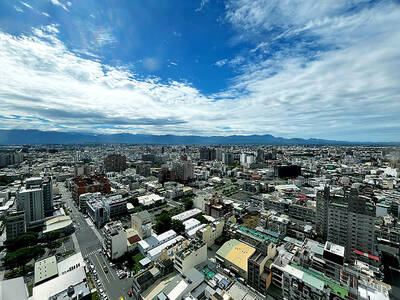Acer Inc (宏碁), the world’s second-largest PC brand, yesterday said it has no plans to acquire Chinese rival Founder Group (北大方正集團) in the near term, but will tap into Founder’s niche to make a further foray into the Chinese market.
“We are not acquiring Founder,” Acer chairman Wang Jeng-tang (王振堂) told reporters on the sidelines of a shareholder meeting. “We are currently working on the collaboration details with Founder and the contract will be sealed within a month at the latest.”
Acer and Founder signed a memorandum of understanding late last month to utilize Acer’s expertise in the planning, development and design of Founder-brand products including notebooks, netbooks, mobile Internet devices and e-readers.
Acer will take advantage of Founder’s comprehensive distribution channels and the Chinese partner’s strength in PC marketing, especially in rural areas and suburban cities, as well as its rapport with corporate and government clients.
Some market analysts have said this partnership would pave the way for a merger.
“Chances are high for Acer to merge with Founder as it is hard for Acer to break through second or third-tier [Chinese] cities, unlike Lenovo Group Ltd [聯想集團],” Digitimes president Colley Hwang (黃欽勇) told an investment forum on Tuesday.
Lenovo is the world’s fourth-largest PC vendor and the largest in China, its home turf.
Responding to a Taipei Times’ question, Wang said Acer still maintained its targets of doubling revenues in China to US$1.5 billion this year.
“We factored in Founder’s contribution when we announced the forecast earlier this year. At the time, talks had been going on with Founder,” he said.
Acer is expecting revenues for the third quarter to expand 10 percent to 15 percent from this quarter, thanks to its aggressive forays into emerging markets such as China, as well as a slew of desktop launches.
Wang said that Acer is set to tap into its manufacturing facilities and computer models made in China and take them to other emerging markets such as India and Brazil.
“These markets need desktops [more than laptop computers] and we will have models coming with new form factors such as all-in-one PCs or features such as touchscreen, for them,” he said.
He also said Acer’s overall desktop PC shipments this year would surpass 10 million units.
Macquarie Group Ltd’s analyst Daniel Chang (張博淇) said in a report this week that Acer is in the final stages of implementing its China strategy and should find a good way to increase its Chinese market share through its alliance with Founder.
“We expect its China sales to grow strongly starting from mid-third quarter and should contribute 10 percent to 15 percent of total sales by 2011, from around 5 percent in the first half of this year,” he wrote.
Meanwhile, Wang said the company always adjusts the average selling prices of PCs depending on market conditions including requests from contract makers.
“The average selling prices of PCs are on an upward trend — the first in five years,” he said.
Acer’s shareholders yesterday approved a total dividend of NT$3.11 (US$0.10) per share, comprising NT$3.10 in cash dividends and NT$0.01 in stock dividends for every share per 1,000 that is held.
Acer’s earnings per share was NT$4.30 last year, excluding the company’s legal surplus, employee bonuses and the board of directors’ remuneration, its statement said.

Meta Platforms Inc offered US$100 million bonuses to OpenAI employees in an unsuccessful bid to poach the ChatGPT maker’s talent and strengthen its own generative artificial intelligence (AI) teams, OpenAI CEO Sam Altman has said. Facebook’s parent company — a competitor of OpenAI — also offered “giant” annual salaries exceeding US$100 million to OpenAI staffers, Altman said in an interview on the Uncapped with Jack Altman podcast released on Tuesday. “It is crazy,” Sam Altman told his brother Jack in the interview. “I’m really happy that at least so far none of our best people have decided to take them

BYPASSING CHINA TARIFFS: In the first five months of this year, Foxconn sent US$4.4bn of iPhones to the US from India, compared with US$3.7bn in the whole of last year Nearly all the iPhones exported by Foxconn Technology Group (富士康科技集團) from India went to the US between March and last month, customs data showed, far above last year’s average of 50 percent and a clear sign of Apple Inc’s efforts to bypass high US tariffs imposed on China. The numbers, being reported by Reuters for the first time, show that Apple has realigned its India exports to almost exclusively serve the US market, when previously the devices were more widely distributed to nations including the Netherlands and the Czech Republic. During March to last month, Foxconn, known as Hon Hai Precision Industry

PLANS: MSI is also planning to upgrade its service center in the Netherlands Micro-Star International Co (MSI, 微星) yesterday said it plans to set up a server assembly line at its Poland service center this year at the earliest. The computer and peripherals manufacturer expects that the new server assembly line would shorten transportation times in shipments to European countries, a company spokesperson told the Taipei Times by telephone. MSI manufactures motherboards, graphics cards, notebook computers, servers, optical storage devices and communication devices. The company operates plants in Taiwan and China, and runs a global network of service centers. The company is also considering upgrading its service center in the Netherlands into a

Taiwan’s property market is entering a freeze, with mortgage activity across the nation’s six largest cities plummeting in the first quarter, H&B Realty Co (住商不動產) said yesterday, citing mounting pressure on housing demand amid tighter lending rules and regulatory curbs. Mortgage applications in Taipei, New Taipei City, Taoyuan, Taichung, Tainan and Kaohsiung totaled 28,078 from January to March, a sharp 36.3 percent decline from 44,082 in the same period last year, the nation’s largest real-estate brokerage by franchise said, citing data from the Joint Credit Information Center (JCIC, 聯徵中心). “The simultaneous decline across all six cities reflects just how drastically the market